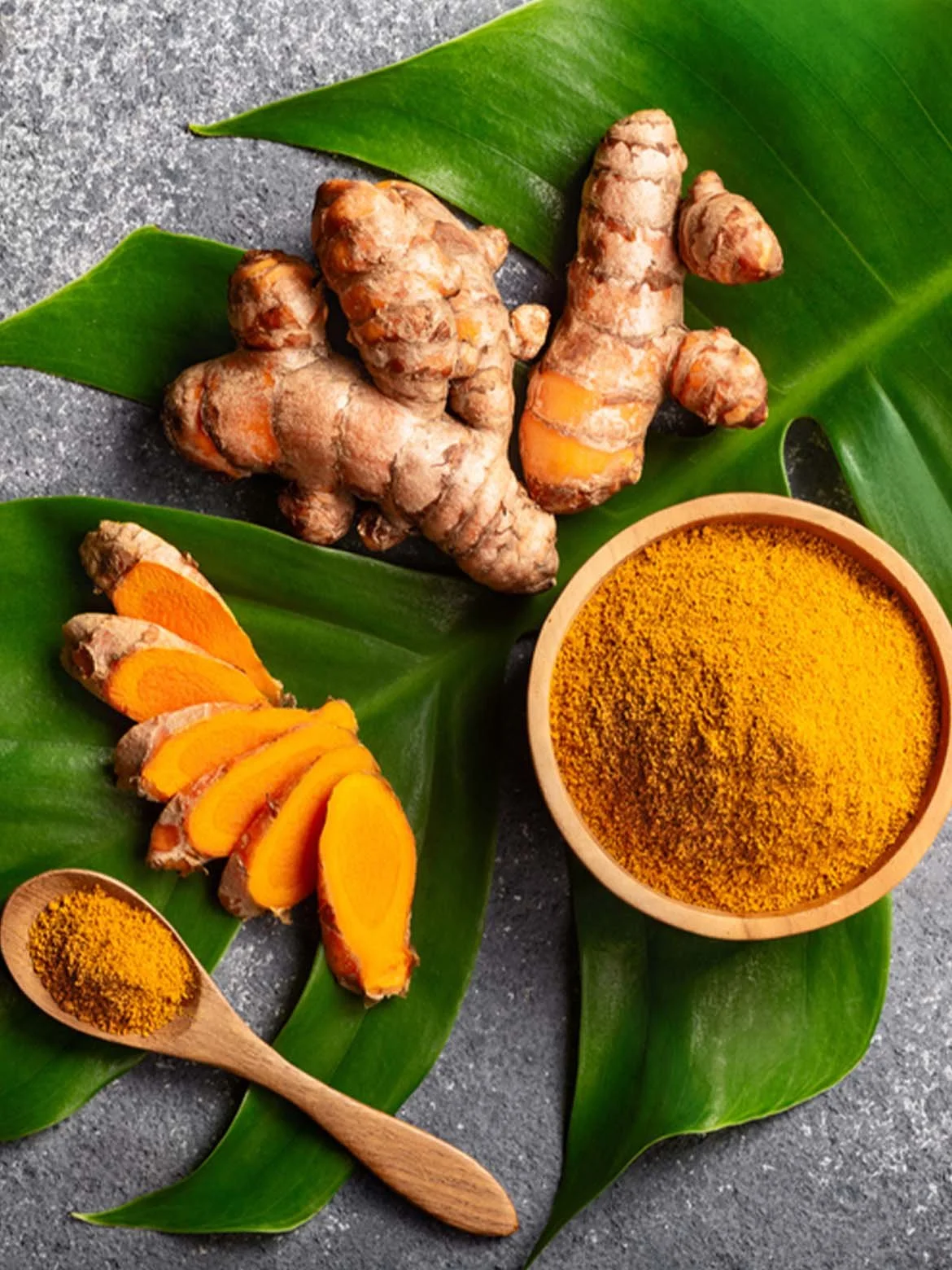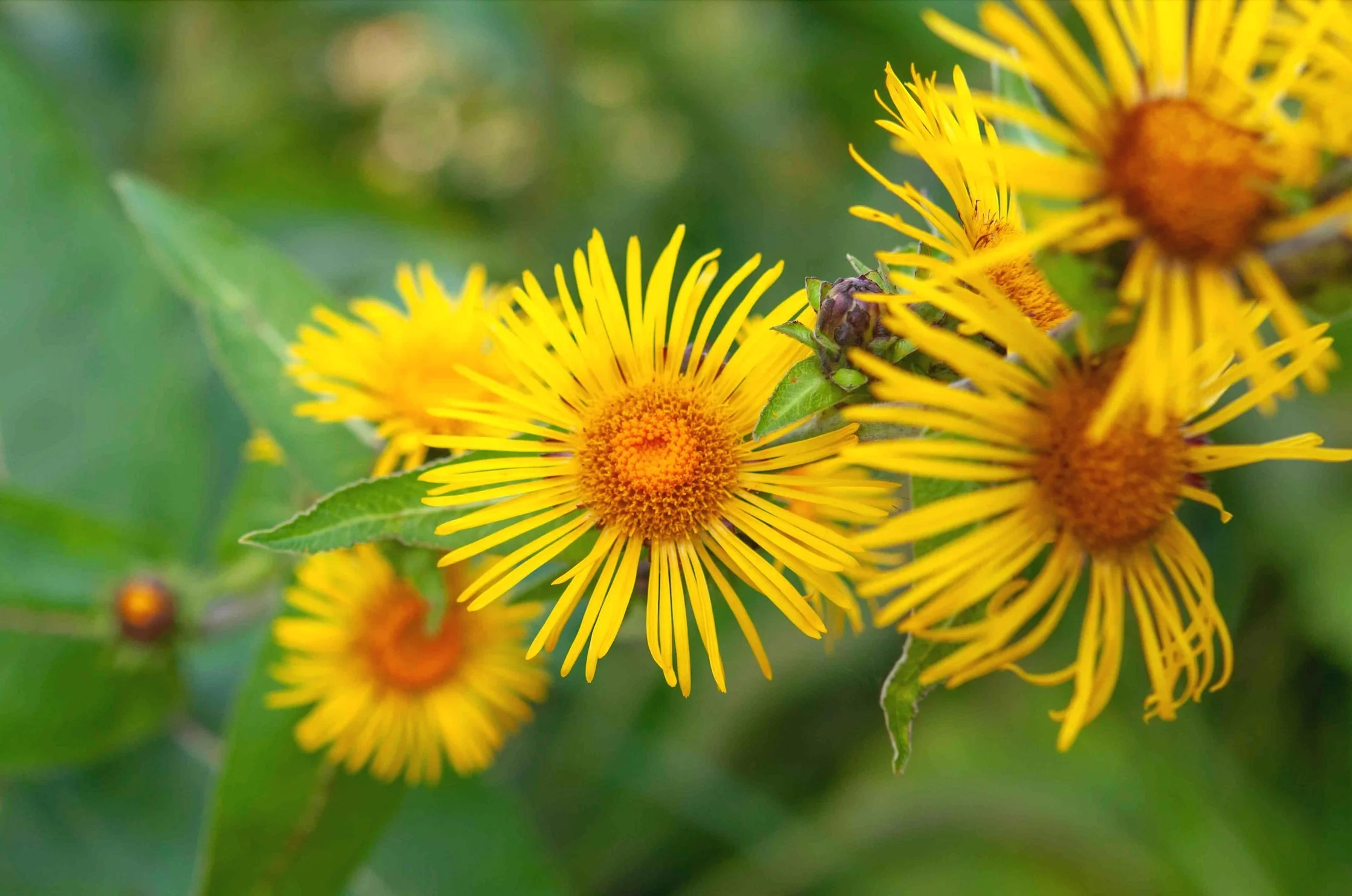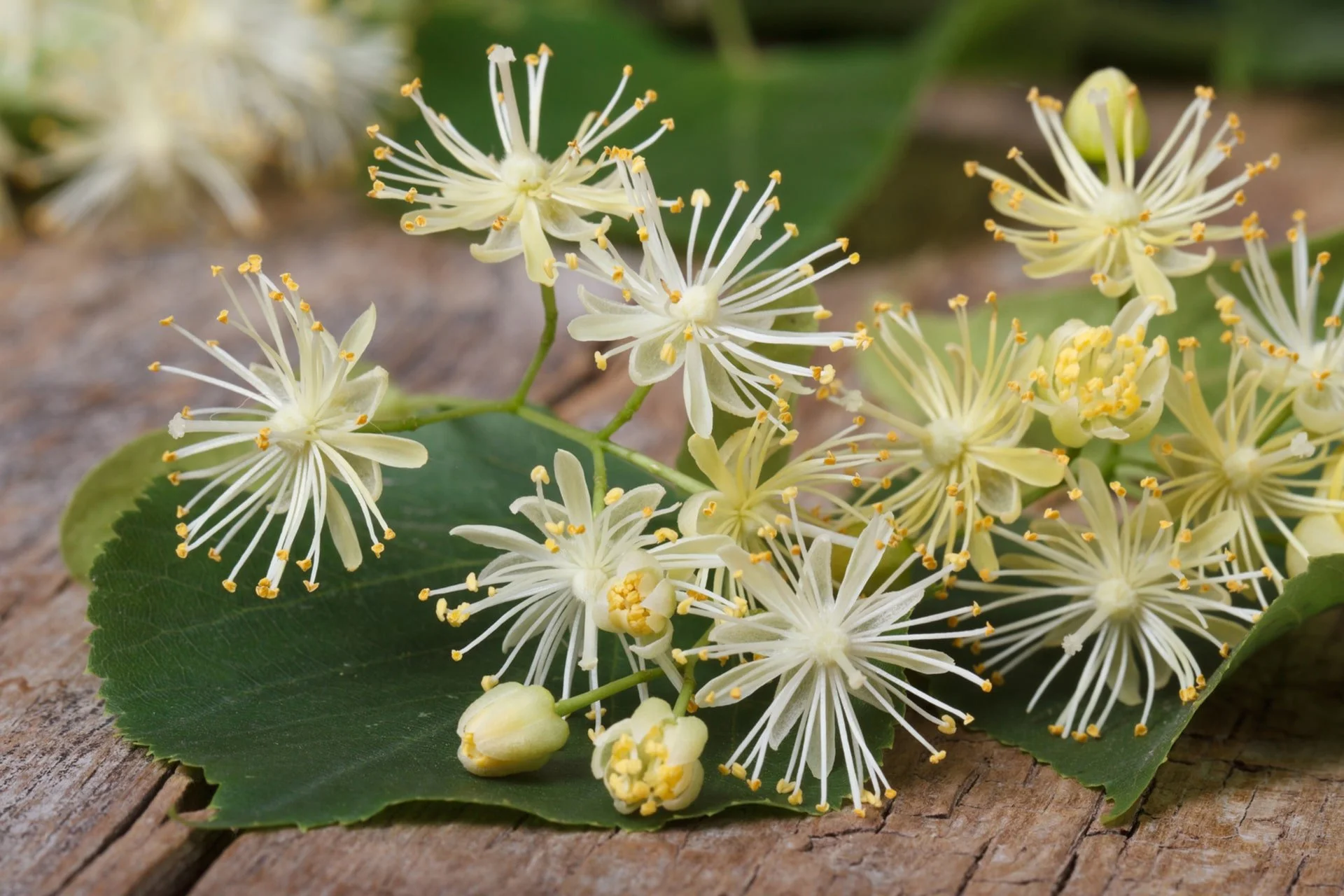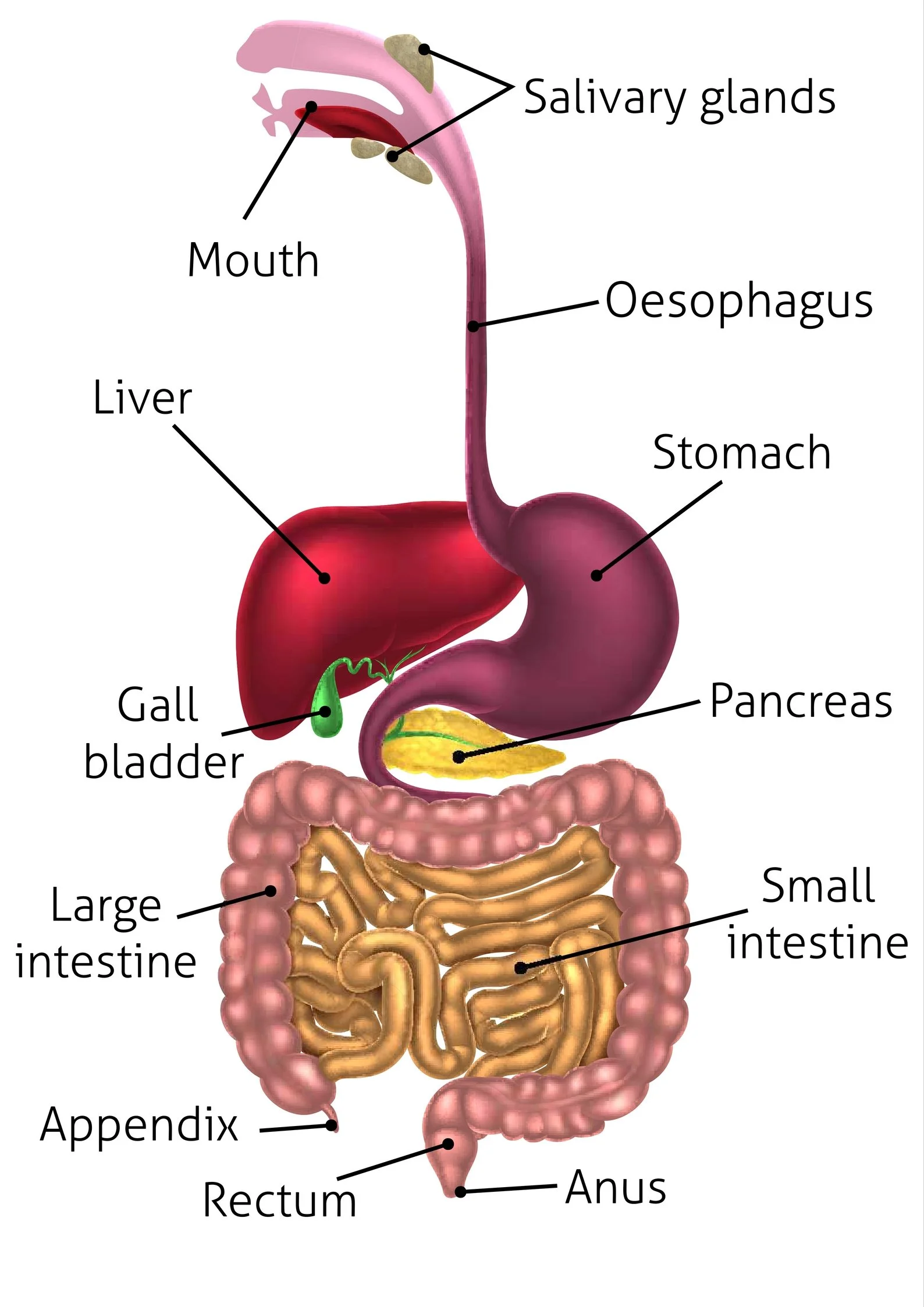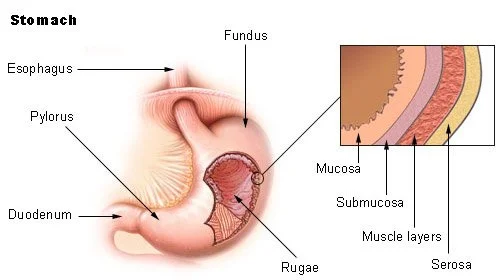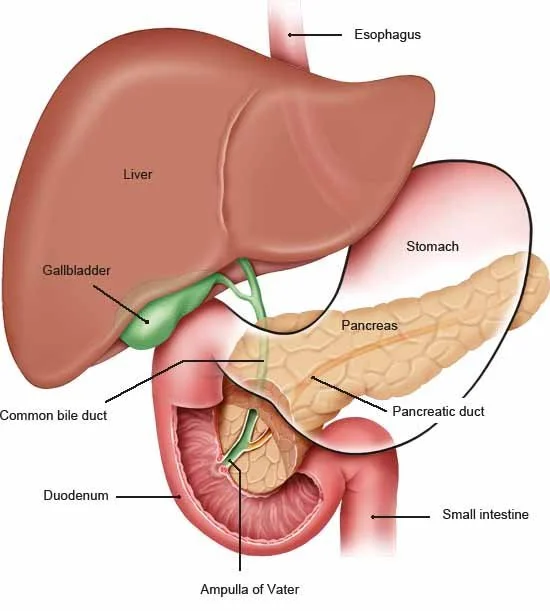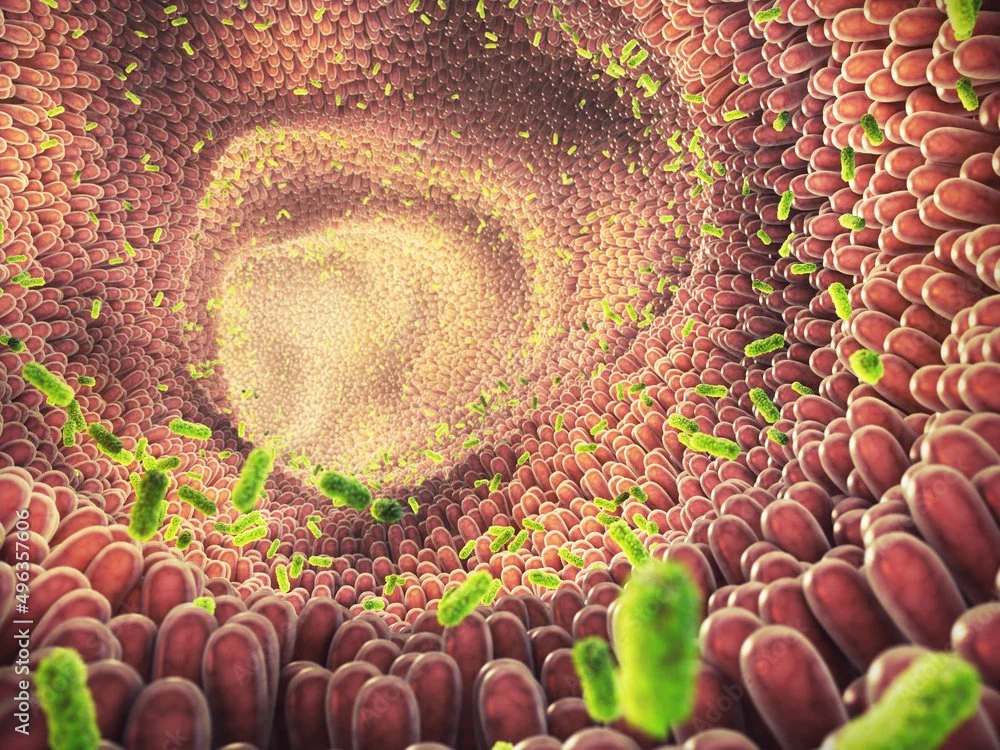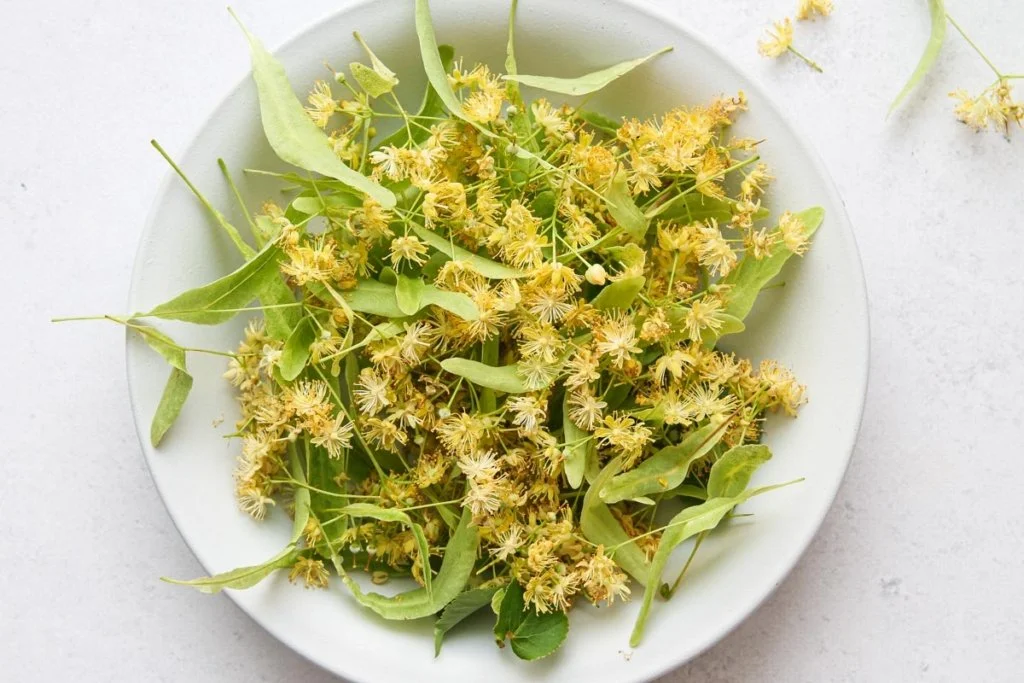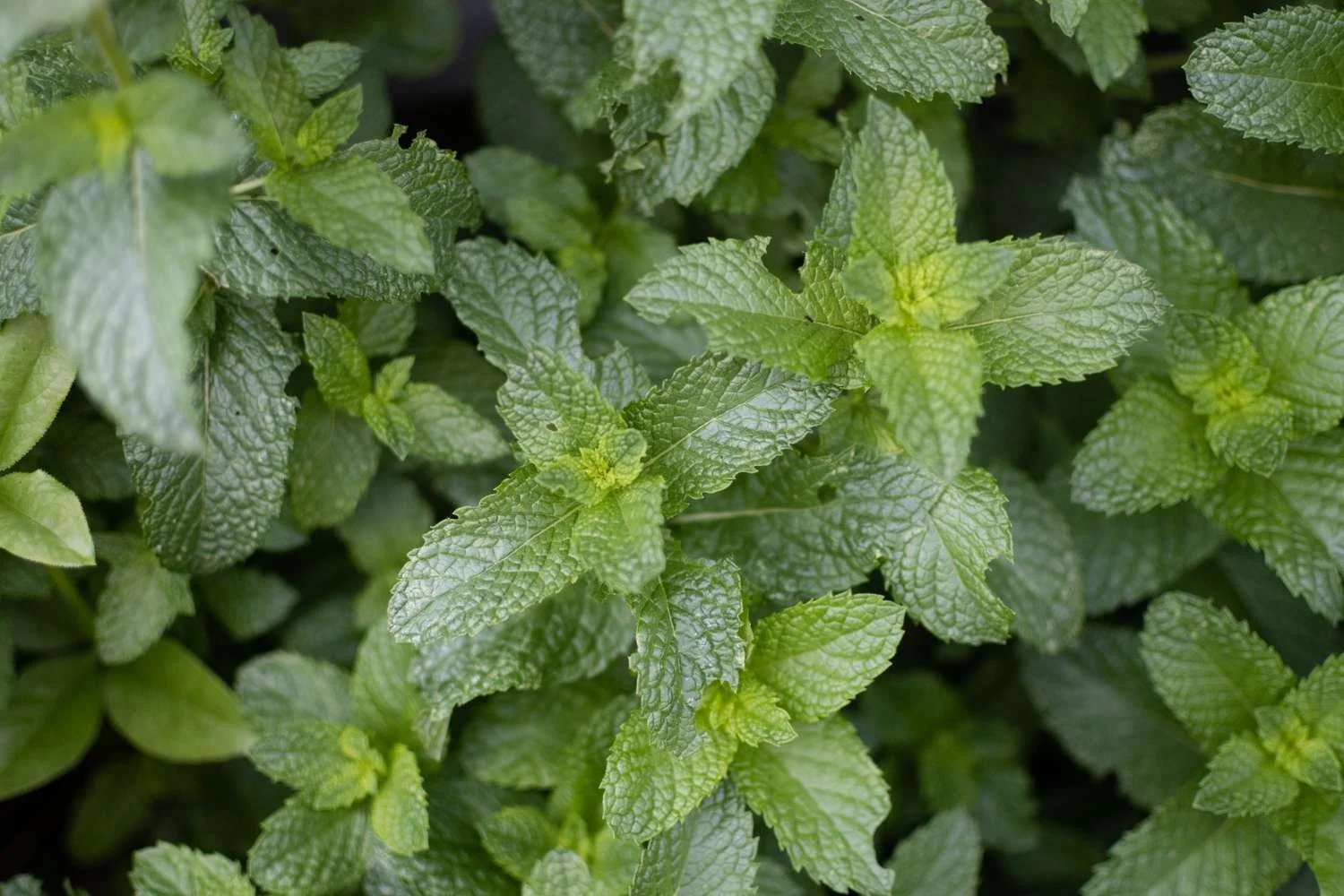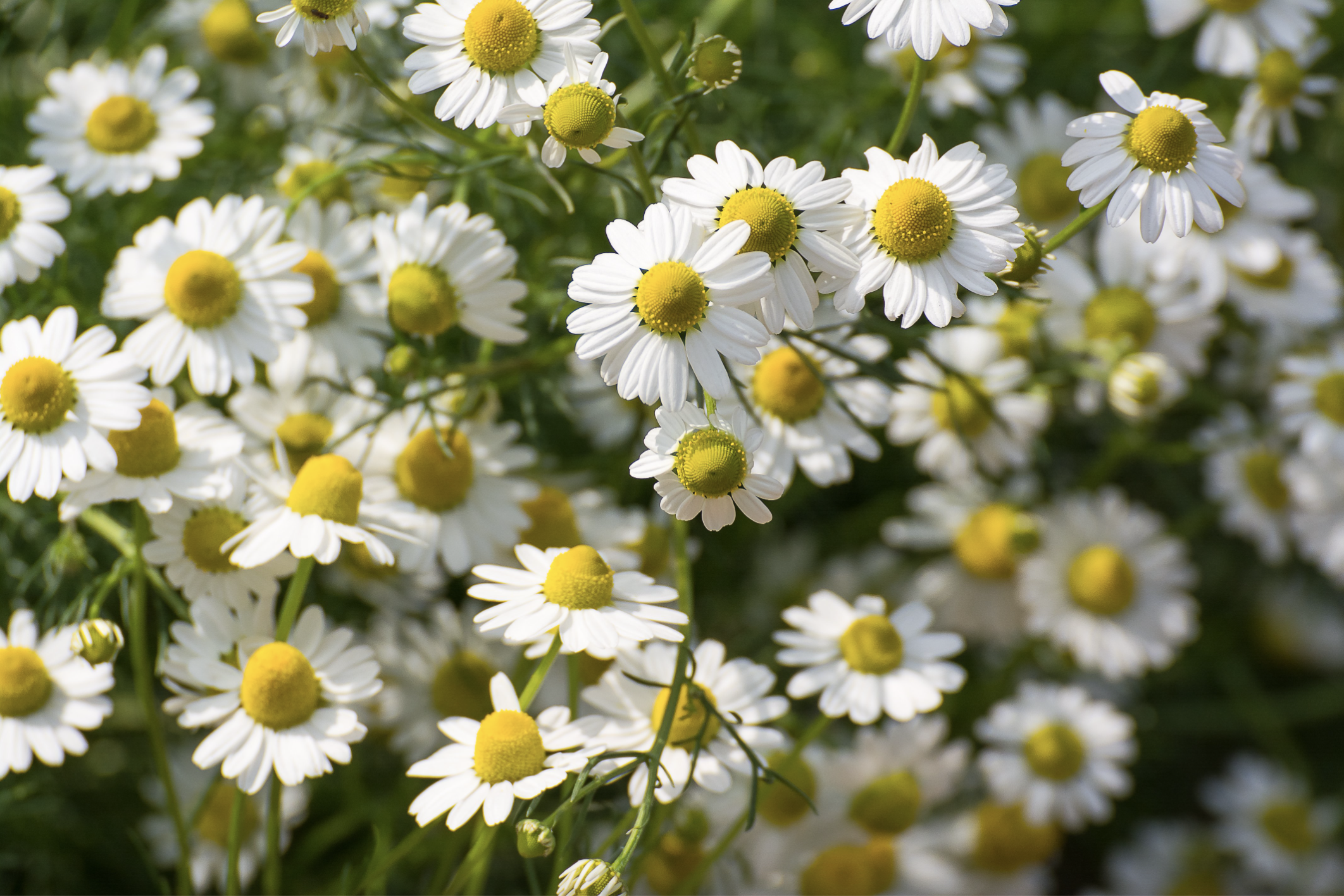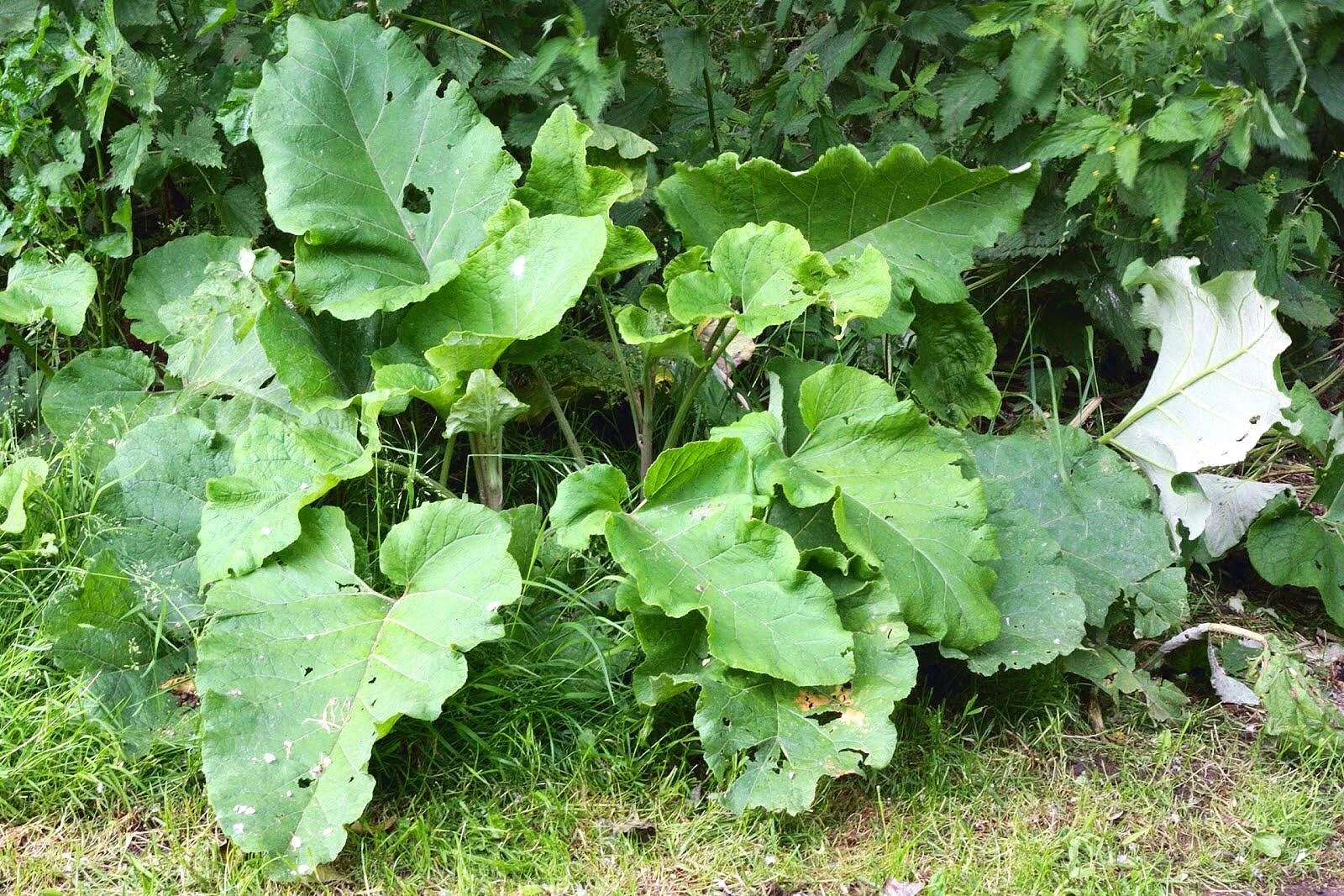The Digestive System
& Solar Plexus
Welcome to the beautiful solar plexus! We need a little joy in our lives people. Seriously… we need joy to survive and be well! Laughter, fun, and play is one of the essential nutrients in life. Anytime I get to this chakra I feel a flood of relief and lightness arrive. I feel so much safety, warmth, and gratitude when I work with this energy center and the plant allies here. They are uplifting, energizing, warming, and fill me with optimism and happiness. The energy of joy is infectious and delicious. It’s a child-like energy we all carry within us… and it is medicine for those around you.
Your child-like joy is infectious and healing to anyone in suffering. Sometimes the people who have struggled the most in life have access to the most joy. We have learned to cultivate joy and lightness as a medicine and antidote to suffering. Joy creates resilience and strength. It is powerful and each of us carry this medicine within us. The truth is our true nature is radiant joy. As we connect to our true nature, beneath any wounding and suffering, exists a joyful innocence and radiant light within us. This is what we find in the solar plexus. It is where we can gain energy and strength. It is where you can go to recharge and be safe, in the warm light of your own being.
I love working with sunny plants that bring me joy and optimism through times of hardship or darkness. The solar plexus is such a wonderful chakra to dive into as it is getting colder outside! We want to keep our fires strong in order to stay warm and joyful during the darker months of the year. I personally find the solar plexus chakra to be the most empowering and strengthening of all the chakras. The solar plexus can bring wonderful transformations, clearing away what does not serve us, banishing and removing what can harm. The fires of the solar plexus can be very protect and shield us from negative energies that might cause a suffering. The element of fire comes in to remove anything that harms, and brings us light to illuminate places of darkness. I find myself craving the light and power of the solar energy and I find many people are empowered and uplifted by strengthening this energy center.
The digestive system is such an important system to help support people with because so many of our daily health issues can arise primarily from our digestive systems! I love to practice listening and communicating with my gut, accessing the intelligence residing there. The digestive system works so hard for us every day of our lives, and given the food we eat sometimes can take quite a beating! This module I hope you learn more ways to slowly help these organs to heal and regenerate, which can take patience and consistency with the plants. Focus on restoring the tissues and organs over a period of months, trusting the plants that you crave and respond well to. Over time continuing to work with each of the plants we talk about you’ll have a strong sense of what you can recommend to help support others. Remember you’ll learn best from your own experience with the plants, and then the experiences of those you offer the plants to!
Enjoy creating blends for the digestive system based on what you and your community is most needing. Listen to the needs of those around you. What are they struggling with daily that you could offer some support with? Remember we aren’t here to fix or cure, just to offer something that might tend and help in some way. Let the people and plants find each other… trust the plants to move through you.
Live into your joy,
Sage
Video ~ Solar Plexus Welcome
Password to view - radiant
PEONY FLOWER
The Solar Plexus
Nurturing the Light Within
The solar plexus is where we meet our true selves, free of all the roles that we play in the world. What a relief! Free of our relationships and layers of dependence. There is a beautiful freedom in releasing our roles and responsibilities of the root chakra and the intimate relationships in our sacral chakra. We get to be with ourselves free of other people’s energies! I’m an introvert, so this is especially important for those of us who recharge from time alone. This is essential for our peace and to restore our energy levels after time being around others. The more our boundaries are healthy with other people, the less we get depleted around others. The solar plexus can teach us about boundaries, creating a shield of protection when we need it.
In the solar plexus we begin to let go of attachments to the earthly realm, making our way to the heavenly realms we find in the heart and upper chakras. In the solar plexus we meet the part of ourselves that is made of pure spirit and light. It is the innocent joyful inner child part of ourselves that is made of the same light as the Creator. This true self gives us a sense of arriving at home, and returning to our soul that radiates warmth and love. In the solar plexus there is no one present to hurt us, only our loving self that can tend to us kindly and compassionately. In the solar plexus we can find a deep sense of safety as we receive the support and strength of our own self.
Identifying Wounded Aspects
When you are working on supporting others with plants, pay attention to some of the signs that this chakra has gotten damaged or depleted. Some of the important signs that our solar plexus needs attention is when the desire to control arises, feelings of anger, aggression, hypersensitivity, the need for alone time, feelings of insecurity, low energy, overwhelm from the world around us, irritation, depression, poor boundaries in relationships, and lack of confidence. We often see low energy levels and low motivation with a deficient solar plexus, as well as lack of self protection. There can be a diminished sense of joy and play, and difficulty allowing oneself to receive what we most need for happiness. There can be a lack of enjoyment and wildness, and a lack of connection to self. Difficulty being alone, and a struggle listening to oneself over the voices of others.
Sometimes when this chakra is wounded and it is flooded with energy it can go into an excess of fire that is still expressing wounds, and we see expressions of aggression, violence, inflated ego, power over others, hateful or judgmental perspectives, jealousy of others, and often over pushing ourselves to the point of burnout. Sometimes when the solar plexus is trying to protect itself and we are trying to remove what is harmful the fire element can become destructive to self or others without good discrimination. There are a few ways to calm this excess wounded fire, both with healing the solar plexus itself and bringing in the element of water to soothe and earth to ground the fire. I often reach towards calming nervines and plants that bring peace, calm painful emotions, and bring in loving energy, such as linden, rose, skullcap, catnip, oatstraw, lemon balm, jasmine, and blue vervain. I might also look towards grounding earth element plants like nettles, burdock, astragalus, marshmallow root, elecampane, or the trees to help bring calm to feelings of fear and root chakra triggers of safety around others.
Solar Plexus Therapies
Some of the therapies for the solar plexus that I often recommend is time with ourselves that feels very nurturing. I ask clients what they do that most connects them with themselves. Time playing and having fun, laughing and being joyful. Taking care of ourselves well and building a sense of self-reliance and self-sufficiency. Spending time listening to ourselves in different ways such as journaling, going to therapy, meditation, art, hobbies we love, nourishing alone time, and yummy body care. The solar plexus is nourished by self expression, freedom, child-like play, time for self reflection and self exploration. Maintaining healthy boundaries and nourishing our relationship to ourselves will strengthen the solar plexus and help us build a strong sense of connection to ourselves.
I love working with fire and solar energy can help to strengthen the solar plexus and bring in powerful healing energies. Sitting beside a campfire, You can also spend time with the element of fire, and its energy will build the solar plexus. Enjoy time in front of wood stoves, campfires and fireplaces, candlelight or greeting the sunrise. Any rituals involving fire or the Sun will strengthen the solar plexus especially if you combine prayers and herbs that call in the energies of fire. Welcome in strength, joy, and protection. As the energy of the solar plexus increases you’ll feel more motivation, self confidence, energy, and centeredness in yourself.
Healthy Boundaries
We need healthy boundaries as practitioners in order to best support others. A healthy solar plexus helps us with good boundaries for many reasons. Our ego and insecurities can cause us to desire to fix, cure, control, and prove ourselves. A healthy solar plexus in a practitioner doesn’t seek to always have power over others by knowing everything, or having all the answers. We will simply offer what we can knowing it is not the answer to all of someone’s struggles. We will understand our proper role, as one of many supports for someone on their path. We do not try to control someone’s illness or suffering, but to try to relieve some of it out of compassion and kindness. Allowing the person themselves to come closer to their experience and what is rising up from within them. We are not trying to silence the voice of their body and being, but to listen together to what their being is expressing.
There are many ways we can hold good boundaries with others, and in the solar plexus we are able to keep these boundaries strong in caring well for ourselves. (A book I love on boundaries is called Set Boundaries, Find Peace by Nedra Glover Tawwab.
Plants for Healthy Boundaries ~ St. John’s Wort, Yarrow, Mugwort, Wormwood, Mandrake, Angelica, Dragon's blood, Sweet Annie, Calamus, Burdock, Myrrh, Rose, Hawthorn, Raspberry & Blackberry, Copal, Sage, Tobacco, Poisonous Plants, Trees
Video ~ Boundaries as a Practitioner & Self Care
The Sweetness of Self Care
Giving to Ourselves
The solar plexus is the chakra where we can spend the most time caring for and listening to our wise self within. Connecting to ourselves deeply gives us a strong sense of inner knowing and a guidance system that helps us navigate through life! When you are working with clients and supporting others, we always want to remember that we are helping people first and foremost stay connected to themselves well. I want to make sure that I am helping support someone in connecting more deeply to themselves, listening to the inner voices within them, and using their inner guidance system to help them navigate towards what is the most healing. I believe time spent listening to ourselves within is incredibly powerful and builds strength, confidence, peace, and personal power.
You can pour healing energy into your solar plexus from hands on energy healing. I’ve done this for years, and its a beautiful practice that will help you to stay grounded in connection to yourself. Breathe slowly with your hands on your belly, asking for healing energy to flow through your hands into your body. Feel the surface of your palms and the warmth of your hands on your belly. Enjoy the comforting touch, sending in healing and love as you breathe and relax into the energy flowing. This healing practice can soothe all of your digestive organs, calm an anxious belly, relieve pain and inflammation.
Close your eyes for a moment and place your hands on your belly. Take a few deep breaths and just feel the sweet presence of your own being. Let your breathe calm your nerves, enjoying a moment of rest and peace. If you have been going through a lot lately, be the compassionate presence sending love and ease through your body. Think about all you have been through this year, and in the last decade. The decades before. Pour kindness and tenderness onto yourself, reflecting on all you have learned and experienced. Think about all the incredible things you have experienced and done in your life over the last decade. Send appreciation and gratitude to yourself. Congratulate yourself for all you can see you’ve experienced. You have been the witness and cheerleader for yourself the whole way. Feel the love you have for yourself pouring over your whole being. Pour light and love through your body, and see the light filling your room, your home, and the life ahead of you in the years ahead. Look forward with joy and excitement for all that is to come on your path. You are worthy of all the blessings coming to you. Feel how worthy you are of receiving all the gifts life has to offer you.
Plants for Compassion & Self-Care ~ Lemon balm, Rose, Calendula, St. John’s Wort, Damiana, Linden, Oatstraw, Sweet Orange, Lemongrass, Nettles,
Video ~ Solar Plexus Energy Healing Practice
Password to view - receiving
Plants of the Solar Plexus
A Return to Self and Joy
I have many herbs that I recommend to others for the solar plexus as well as therapies used in combination. Some of my favorite plants of the solar plexus include our spicy fire nature plants like ginger, turmeric, cayenne, sassafras, cinnamon, clove, cardamom, Angelica, calamus, spices such as cumin and coriander. These strong fire aromatics are banishing and protective. They are good at bringing activation, motivation, energy, strength and movement. I use these strong fire nature plants to bring transformation when there is stagnation and blast fire energy and warmth where there is dampness and heaviness. These plants can wake you up, and initiate movement or activation where there has been stuckness. Call on them as well for protection and removing unwanted energies.
Some of the gentle fire plants that I love for their sunny solar energy includes St John's Wort, calendula, lemon balm, linden, california poppy, chamomile, damiana, lemongrass, oatstraw, marshmallow root, sweet orange and the citruses can bring in a lot of joy, optimism, sweetness and playfulness. These plants can be very uplifting when there has been depression and help us to feel a sense of ease and happiness. I love them for their antidepressant effects and the way they strengthen the solar plexus by increasing feelings of self love and self compassion. They are often very healing to eating disorders and low self-esteem
Some of the other plants that I love for the solar plexus are warrior protector plants that can be a little bit fierce such as wormwood, mandrake, angelica, dragon's blood, Sweet Annie, calamus, sarsaparilla, and other plants including some that may be a little bit poisonous. Think about the protective plants that you are drawn to and you might want to call them in for this chakra in particular because we want to establish very strong boundaries in our relationships when it comes to the solar plexus. We need to be able to protect.
Video ~ Healing Plants for Solar Plexus
Password to view - sunny
Solar Plexus Empowering
Bundle Ritual
This is a ritual I love to do for strengthening the solar plexus and calling in healing we need. Weaving together the energies of the plants with our prayers, harnessing their magic and power. In this ritual you’ll create a bundle of plants and written prayers, asking for the healing energies you’re seeking in the solar plexus. You might call in joy, freedom, self-love, healthy boundaries, strength, motivation, protection, empowerment, fun, energy, or anything else you want to give yourself.
Light a candle and some blessing herbs, and spend a few minutes grounding into your breath and body. You might want to put on some music and journal for 10 minutes about where you are, and what you’re seeking. Let the voices within you be heard, asking for what you desire for yourself. Spend a few minutes writing down prayers on a piece of small paper, calling in the energies you are wanting to welcome.
Cut a piece of yellow or orange cloth 6 inches square. Inside the cloth you’ll place your written prayers and herbs. Gather together some of the solar nature plants such as Calendula, Dandelion, Lemongrass, Damiana, St John’s Wort, California poppy, Elecampane, Angelica, Sweet Annie, Lemon balm, Ginger, Turmeric, Sweet Orange, and any other solar plexus trauma healing plants you feel called to like Linden, Rose, Oatstraw, Comfrey, or Mullein.
Ask each plant one at a time to bring in their support. Breathe in their scent, and communicate with each ally you place in your bundle. Fold up your written prayers and add them to your bundle of herbs. Then tie together the opposite diagonal corners of the fabric and send your blessings and prayers into the whole bundle. Thank all of the herbs for bringing their healing energies and magic. You can carry the prayer bundle around your neck, place under your pillow, or on your altar.
Our Digestive Fire
The Digestive System
The digestive system is responsible for giving the body all of the fuel it needs along with the oxygen we breathe to have energy! Many cultures believe most of our illness arrises from the digestive system, which I think can be true if we are really struggling to digest nutrients our body needs, and creating waste/toxins from undigested food. In Ayurveda the digestion system is thought to be related to the element fire, and the quality of our digestive function is described as our “digestive fire”.
If you have a strong digestive fire, you digest your food fairly well with very little indigestion experienced after a normal meal. Your bowel movements are regular and pass easily, usually one movement per meal of the day. Your appetite comes a few times a day at meal times, and when you eat you don’t deal with a bloated or gassy belly.
We will go over all of the aspects of a strong digestive system that will keep your digestive fire active to fuel your body and energy levels well! For more information here is a great article on digestive fire in Ayurvedic tradition.
The digestive system gives us the nutrients our body needs for growth and repair. It is incredibly important that we have a well-working digestive system, as well as a good diet providing the body with the nutrients it needs to rebuild healthy tissue and provide fuel for all of our cells. Food also provides the energy we need (along with oxygen we breathe), in combination with the work of our endocrine hormones such as adrenalin from our adrenals and thyroid hormones (regulating metabolism).
The digestive system is also responsible for removing toxins and killing pathogens that come in with our food, and we can help our digestive system do this with herbs. Leaky gut is one case of having damaged intestinal lining, which allows for larger molecules as well as toxins to pass through the intestines into the bloodstream. If we have a compromised immune system or damaged tissue, we will also be more prone to allergic reactions to food, as well as inflammatory conditions.
Mucous Membranes
The digestive system is composed of mucous membranes and smooth muscle stretching from mouth to anus, which are permeable in order to allow nutrients to pass into the blood stream starting at the mouth. Food is propelled by muscular contractions through the whole digestive tract, with nutrients being absorbed mostly in the intestines. These membranes are porous, which allows nutrients to pass into the blood stream, but also makes this tissue vulnerable to infection. Mucous membranes create mucous that helps our food to slide through the digestive tract as well as protect tissue from harm. This protective mucous acts as a barrier against infections, trapping and moving out pathogens coming in with food. Mucous membranes are also vulnerable to toxins as well as pathogens, which causes a tendency for inflammation.
We can help mucous membranes throughout the whole digestive create a barrier to toxins and pathogens passing into the bloodstream by using astringent (toning and tightening) herbs such as plantain or raspberry, as well as demulcent mucilaginous herbs such as marshmallow root or slippery elm that replicate the protective mucous our body makes.
The Mouth
The mouth is the first stage of digestion, and it’s a really important part! Absorption of food begins in mouth, and it is the first site of listening the body has to decide if we should keep eating what we have put into our mouth! We chew our food to break it down, and cover the food in our saliva that also helps to break it down. Enzymes in our saliva help to digest our food. Saliva contains combounds that kill off pathogens, and mucous in our saliva traps bacteria from infecting our body.
Keeping our mouth healthy is very important because we need our teeth! Having healthy teeth free of infections (such as cavities that cause them to rot) insures we have the ability to grind up our food to help our digestive system break it down. If we can prevent bacteria and rotting of our teeth, we can ensure we will have the ability to chew our food well. It’s also quite painful to chew and eat if we have rotten teeth with painful nerves in our teeth getting exposed! Below is a list of herbs you can use to kill off bacteria and pathogens residing in your mouth. You can use them as a mouthwash, tooth powder, or toothpaste.
Herbs for Oral health –
Clove, yarrow, spilanthes, black birch, wintergreen, tea tree, oak bark, sage, peppermint, fennel, neem, pine resin, usnea, plantain, myrrh, calendula, marshmallow, ginger, coconut oil, turmeric, thyme, cinnamon, goldenseal, aloe
Tooth Powder Recipe ~ Powdered fennel, clove, yarrow, sage, marshmallow root, thyme, and ginger.
Grind up together and use the powder to brush your teeth after a regular brushing.
Rinse your mouth after brushing with tooth powder.
Digestion & The Stomach
The stomach is where a lot of our digestion begins, especially protein digestion. We’ll go over some of the physiology of the stomach, and talk about issues that arise there. Food moves from our mouth into our esophagus, passing through the esophageal sphincter and into the stomach where it hangs out for 2-4 hours being digested. The stomach is a sac made of smooth muscle that is located on the left side of the abdominal cavity, under the left lower rib cage. It is the size of two fists placed next to each other on average and composed of 3 bands of muscles that contract and relax in order to “churn” our food. The stomach is filled with gastric juice, which includes enzymes and hydrochloric acid that help to destroy bacteria and break down food. Mucous membranes in stomach produce thick mucous to protect the stomach walls from the hydrochloric acid that can burn our skin on contact. Our stomach secretes up to 5 pints of gastric juices per day.
Herbs to support the stomach mostly include sours and bitters. Kombucha, herbal vinegars, citrus such as lemon and lime, schisandra, hibiscus, and sweet orange are all great sour herbs. Many fruits such as citrus give us the sour flavor, which we can use to stimulate our digestive juices.
My favorite bitters are yellow dock, turmeric, dandelion, burdock, bitter greens, elecempane, blue vervain, bitter orange, and motherwort. Bitters not only activate our digestive juices in the stomach, they stimulate our liver to produce and release bile to digest fats. Bitters are also good for our pancreas, which can prime the release of pancreatic juices.
To soothe heartburn, acid reflux, and inflammation of the stomach lining use demulcents such as marshmallow, slippery elm, oatstraw, linden, aloe, calendula, violet juice, carrot juice, and burdock. They can also be helpful for ulcers, but you want to add wound healing vulneraries like plantain, comfrey, violet, calendula, yarrow, and marshmallow root. Lowering stress and improving your diet would help to support stomach health.
Video ~ Digestion & The Stomach
Password to view - digest
Intestinal Health
Our intestines are the main place in our digestive system where our body absorbs water and nutrients. The small intestines absorb about 90% of the nutrients from the food we eat, processing around 2 gallons of food, liquids, and digestive secretions every day. Our intestines also contain the largest amount of immune cells in our body, about 80 % of our entire immune system! The small intestines are 10-15 ft. long and of 1 inch thick smooth muscle that contracts and relaxes (similar to a worm) allowing food to move through the intestines slowly in order to be broken down and absorbed.
The inner lining of the smooth muscle of the intestines are made of porous mucous membranes, which are continually absorbing nutrients as our food is digested. Nutrients pass through the intestinal wall, through little finger projections called vilii covering the intestinal wall that increase surface area for absorption. The vilii are connected to blood capillaries, which absorb nutrients directly into the bloodstream to head to our liver for further processing. If toxins also pass through the intestinal wall they are hopefully broken down by the liver before spreading to the rest of the body.
Since the whole digestive system where food passes through is made of mucous membranes, these tissues have to be supported with herbs when they are damaged. Toxic foods, infections, allergic reactions, chronic inflammation (from wounded tissue, infections, allergies, etc), can all damage our intestinal mucus membranes. We can use vulnerary, astringent, anti-inflammatory, and demulcent herbs that help to protect, soothe, tone, and heal the tissue of our mucous membranes when they are damaged. Vulnerary herbs help to speed tissue healing, anti-inflammatory herbs soothe inflamed tissue (an immune response to damaged tissue), astringents tone and strengthen the smooth muscle, and demulcents protect the tissue from toxins, infections, and damage.
Herbs to heal and support healthy intestinal mucus membranes ~
Astragalus, marshmallow, plantain, comfrey, slippery elm, dandelion, burdock, nettles, alfalfa, chickweed, nourishing herbs.
Herbs for calming inflammation in gut ~
Turmeric, ginger, marshmallow, licorice, slippery elm, plantain, calendula, chickweed, burdock.
Our Friends… The Intestinal Bacteria
Beneficial bacteria cover the inner lining of the intestines, helping to break down our food. They are responsible for producing enzymes to break down food, as well as producing vitamins like B12 and K, as well as most of our serotonin.
The small intestine creates enzymes that helps to break down our food, but enzymes are mostly produced by our beneficial gut bacteria. We have 4-10x more bacteria in our body than human cells! (Our body is only 25% human cells). There are more than 3,000 different species of gut bacteria, weighing about 3 pounds total. The first big dose of microbes comes from birth canal, and the second comes from breast milk. Dirt, pets, family members, friends, all pass good bacteria to babies.
Our beneficial bacterial help to kill pathogens, and block pathogens from entering the bloodstream. They aid in the production of antibodies to pathogens & support immune function in gut. These intelligent bacteria in our intestines train our immune system to distinguish between pathogens and non-harmful foreign particles from our environment, and to respond appropriately based on whether it is harmful or not. Our white blood cells will then either attack the antigen, resulting in a pathogen that could cause an infection being killed off. Or our white blood cells will leave the foreign particle alone. This important function prevents your immune system from overreacting to non-harmful antigens, such as allergies to foods like nuts that aren’t actually harmful. We need our gut bacteria to train our immune system well! This reduces allergies, inflammation, and autoimmune flare ups.
Herbs to increase healthy gut bacteria ~ High in inulin.
Dandelion, burdock, nettles, Jerusalem artichoke, nourishing herbs.
The Many Roles of Serotonin ~ 90% Produced in our gut
Our intestinal bacteria also produces 95% of our serotonin and hundreds of other neurotransmitters such as dopamine. These neurotransmitters support our intestinal function, sleep rhythms, heart function, reproductive organ function, nervous system function and stress response, and more.
Pancreas & Liver
The Pancreas produces enzymes and juices that help to break down food in the small intestine. It dumps alkaline fluid and enzymes into the small intestine once food enters from the stomach. The pancreas is also an endocrine organ, producing hormones such as insulin and glucagons. Insulin tells our cells to absorb glucose from our blood, and slows the rate of glucose to be broken down in the liver and released into the blood stream, increasing blood sugar. Glucagon stimulates the release of glucose into the blood. (Insulin lowers blood sugar, glucagons increases it).
- Produces insulin to help cells take in sugar from the blood for energy.
- Secretes up to 2 1⁄2 pints of digestive juice into small intestine per day.
PACREATIC ENZYMES
- Enzymes are proteins that speed up chemical reactions, such as the breakdown of complex proteins,
fats, or sugars. Essential for proper digestion and break down of nutrients.
- Enzymes are – Lipase, Protease, Amylase
- Can be supplemented, but that can cause less production by pancreas.
Herbs to support the pancreas ~ Dandelion, burdock, yellow dock, bitters, lemon, bitter orange
LIVERLast stage of digestion. Responsible for metabolizing carbohydrates, lipids, and proteins into
forms the body can use. The body’s main chemical factory, converting molecules into simpler or more complex forms as the body needs. Nutrients are modified in the liver, toxins broken down.
Largest organ in the body, only organ that can re-grow itself. Nutrient delivery - After nutrients have entered the blood stream from the small intestine and passed to the liver for further processing and cleaning, nutrient rich blood heads from the liver to the heart to be pumped
through the body to cells.
Helps eliminate and store toxins (such as metals and plastics) that have passed from the small intestine
into the bloodstream. Removes toxins before they enter the rest of the body through the blood stream.
Enzymes in the liver break down many toxins such as alcohol and drugs into inactive/un-harmful forms.
Metabolizes (breaks down) and removes hormones produced by the body’s endocrine glands from
the blood stream. Stores many essential nutrients, vitamins, and minerals ~ Glucose, fatty acids, vitamins A, D, E, K, and B12, iron and copper - to provide a constant supply of these essential substances to the tissues of the body.
Produces bile, (a greenish digestive juice) which is stored in the gallbladder, and then released into the small
intestine to help break down fats. Bile emulsifies fats breaking down large clumps of fat into smaller ones allowing the body to break them down more easily. Bile is a mixture of water, bile salts, cholesterol, and the pigment bilirubin. Every day the liver produces up to 2 pints of bile.
Immunity - White blood cells in the liver capture and digest bacteria, fungi, parasites, worn-out blood cells, and cellular debris through the blood.
Herbs to support the liver ~
Milk thistle, dandelion, burdock, yellow dock, bitters, lemon, bitter orange, blue vervain, reishi, chagaHerbs to support the gallbladder ~
Bitters, dandelion, burdock, yellow dock, lemon, bitter orange, blue vervain, wormwood, celandine (small amounts/toxic)
LARGE INTESTINE/COLON
5 ft. long – 2 inches wide.
Highest quantity of beneficial bacteria in the body – up to 100 billion to 1 trillion bacteria cells per milliliter of the large intestine. Continues to break down food from small intestine. Bacteria feeds on fiber, and then creates fatty acids. If they don’t have enough fiber food to live on, they will consume the cell lining of the colon causing inflammation.
Fiber rich foods gut bacteria love ~ (fructan and cellulose fibers)
Jerusalem artichoke, chicory root, leeks tops, onions, raspberries, artichokes, beans, asparagus, garlic, broccoli stems, carrot skins, fruit, kale, celery.
Absorbs water to help create stool.
DESCENDING COLON
Prepares waste (un-usable material) to be eliminated. Absorbs water to create stool. When enough stool accumulates, peristalsis begins to empty the bowels. Herbs to support colon health & water absorption
To treat diarrhea ~
Raspberry, blackberry, agrimony, plantain, oak bark, apple bark, witch hazel bark
INTESTINAL ENZYMES
- Essential for proper digestion and break down of nutrients.
- Example - Lactase to break down lactose in milk. Names end in ‘ase” - Can be supplemented.
*** Herbs high in enzymes for gut – citrus, pungents (ginger, mints, turmeric, cooking spices), papaya/pineapple/fruit enzymes, cayenne, fennel, garlic, clove, cardamom etc.
ROLE OF STRESS
- Stress shuts down digestive system & slows production of digestive juices and enzymes.
- Slows blood flow to digestive system.
- Slows repair of tissue, production of enzymes or bile.
- Causes tension and contraction of muscles in the gut.
- Can signal the immune system to overreact throughout the gut and lead to inflammation.
- Causes spasms in the gut and can lead to emptying of the bowels.
*** Herbs to ease stress in digestive system – Lemon balm, chamomile, blue vervain, passionflower, skullcap, motherwort, adaptogens etc.
TOXIC FOODS
- Alcohol, tobacco, chemicals in foods (pesticides etc.), metals, plastics, pollutants, chemicals in cleaning
products, processed foods etc. can damage the organs of the digestive system, and impair digestive function to a large degree.
*** Herbs counteract toxins – Marshmallow, burdock, turmeric, lemon, slippery elm, dandelion, reishi, chaga, nettles, oatstraw, nourishing herbs, aloe, charcoal, carrot juice, clay.
LYMPHATIC STAGNATION
- Lymph vessels are throughout the intestinal tissue.
- The intestines can often become damp/congested due to lymphatic stagnation within the
intestines. Lymph helps to remove wastes from the cells and tissues themselves. Remember that moving healthy fluids equals healthy tissue. Healthy tissue of the digestive system is needed for good digestion!
*** Herbs to support lymphatic movement/cleansing – Calendula, cleavers, violet, dandelion, burdock, poke (1-3 drops, careful!), echinacea, astragalus, red clover, nourishing herbs.
POOR BLOOD CIRCULATION –
- Leads to the poor absorption of nutrients, and lack of health of the digestive tissue.
*** Herbs to increase circulation to gut – Ginger, turmeric, cayenne, cinnamon, damiana, clove, mints, sassafras, sarsaparilla, osha, elecampane, schisandra, pungents.
LACK OF EXERCISE –
- Exercise moves the bowels, increases waste removal, peristalsis, and increased blood flow to and from the gut.
RELATED SYSTEMS –
- Circulatory system
- Mucous membranes
- Nervous system
- Immune system
- Lymphatic system - Endocrine system
Diuretics ~ Dandelion, nettles, schisandra, cleavers, horsetail, turmeric, parsley, juniper, uva-ursi, hawthorn, yarrow, goldenrod, water.
Soothing herbs for the urinary tract ~ Hibiscus, marshmallow root, cornsilk, calendula. Other wound healing tissue (vulneraries) like violet, comfrey, mullein, plantain can also repair sensitive urinary tract tissue.
Let’s talk about supporting urinary tract health, since UTIs are so common and often recurring. To keep your urinary tract and bladder happy and healthy, I recommend diuretic herbs that increase urination, probiotics to increase healthy flora, and plants that can heal the tissue of these mucous membranes. In people with vaginas, the urinary tract tends to get infected more often since it is shorter than in penises, and it is exposed to any bacteria entering the vagina. You will want to use probiotic capsules in water as a douch to keep healthy bacteria in the urethra. You should feel the difference in one day!
Diuretic herbs like nettles help to stimulate the kidneys, and flush out the bladder and urethra. Along with drinking enough water, they can help to keep the bladder, kidneys, and urethra healthy. Diuretics ~ Nettles, Schisandra, Parsley, Dandelion, Cleavers, Horsetail, Juniper, Uva ursi, Yarrow, Blue vervain, Burdock.
If you have had inflammation or infection of the urethra, you’ll want anti-inflammatory and tissue healing herbs to soothe the mucous membranes of the urethra. These soothing herbs include marshmallow root, corn silk, hibiscus, cranberry, calendula, dandelion, goldenrod, turmeric, and burdock. I find that with a painful UTI often hibiscus tea can soothe the pain quickly. Remember though you can soothe the tissue, but you also need to fight off any pathogens causing infection. Keep your immune system strong with adaptogens, use probiotics and focus on prevention as much as possible to limit the bacterial spread to the urethra. If there is an infection, I recommend stronger antimicrobial herbs like usnea tincture, turmeric, oregano, yarrow, myrrh, and echinacea a few times a day.
Video ~ Herbs for Kidneys & Bladder
Password to view - release
SCHISANDRA
The Endocrine System
Dance of Hormones
The endocrine system controls a lot of our bodies physiology, including our reproductive system, stress response, our metabolism through our thyroid gland, sleep cycles through the pineal gland, our body temperature and hunger. Understanding the endocrine system is very helpful when we are trying to balance hormones, since the hypothalamus and pituitary gland in our brain signals all of our reproductive endocrine organs to produce our reproductive hormones. The glands of the endocrine system work together in a delicate balance, all together controlling a lot of our body processes. The hypothalamus and pituitary gland act as the conductors to the orchestra of all the other endocrine glands!
The hypothalamus and pituitary gland in our brain signals the ovaries, adrenals, and testes to release specific hormones like estrogen and testosterone. When we are under stress cholesterol in our blood is used to produce cortisol instead of our reproductive hormones. So when we are under stress even if it is excitement and positive stress, our endocrine system produces less reproductive hormones and more stress hormones. Endocrine system hormones also act like neurotransmitters and affect the nervous system in many different ways that effect our mood.
Herbs can help to regulate our endocrine system, harmonizing this dance of hormones that includes our reproductive hormones. Adaptogens such as ashwagandha, schisandra, holy basil, maca, shatavari, nettles, burdock, siberian ginseng, fo ti, and panax ginseng help to support and balance the whole endocrine system, as well as other endocrine tonic herbs like chickweed, violet, dandelion, and oatstraw. There are herbs we can use that are specific to certain endocrine organs, such as nettles for the adrenals, or seaweed for the thyroid.
Endocrine tonic herbs help to support the hormonal system by tonifying and supporting the function of the hypothalamus/pituitary and hormone glands throughout the body, which control our reproductive function. These are our adaptogens from last month’s module! When you want to balance hormones, always include our endocrine balancing tonics and adaptogens.
Chemicals in our environment called endocrine disrupting hormones create hormones imbalances as well as damage to our DNA and cells. Many of our hormones can be affected by endocrine disrupting chemicals. Phytosterols (plant hormones) in plants can block endocrine disrupting chemicals from attaching on to cells, and reducing the damage they cause in our bodies. Most of our adaptogens are high in phytosterols, so they are working to balance our endocrine system on many levels!
General Endocrine & Hormonal Tonics ~
Shatavari, Ashwaganda, Schisandra berry, Siberian Ginseng, Reishi mushroom, Ginseng, Holy basil (Tulsi), Maca, Rhodiola, Dandelion, Oatstraw, Nettles, Burdock,Violet, Chickweed and others.
Video ~ The Endocrine System
Password to view - balance
SIBERIAN GINSENG
Hypothalamus & Pituitary Gland
The hypothalamus is the master conductor of our endocrine system hormones, regulating our metabolism, energy levels, growth and development, blood pressure, body temperature, fluids & electrolytes, body weight, thirst, hunger, sleep, fatigue, mood, reproductive/hormone cycle, and sex drive.
This is why when our hormone levels change during menopause and andropause (with the drop in production of estrogen, progesterone, and testosterone), all of these things are affected! Energy levels change, moods, metabolism, sleep patterns, and libido. The dance of hormones in the body is carefully balanced… when the levels of one hormone change, it can affect many of these aspects of our body’s functioning.
To balance our reproductive hormones we can target the hypothalamus and pituitary gland in the brain as well as our endocrine system as a whole. I recommend brain tonics for the hypothalamus and pituitary gland such as ginkgo, Lion's mane, schisandra, astragalus, gotu kola, ashwagandha, oat straw, and other neural restoratives. You can also use nervines to relax the stress response and allow the endocrine system to focus on making reproductive hormones instead of stress hormones.
All of our adaptogens are considered hormone tonics and some of them contain phytosterols, which are plant hormones that the body can use to produce our own hormones. Some of these phytosterol rich plants are shatavari, ashwagandha, maca, panax ginseng, Siberian ginseng, and fo ti.
Video ~ Endocrine Regulating Herbs
Password to view - adaptogens
Reproductive Hormones
Here is a little review on our reproductive hormones! We all have same 3 main reproductive hormones present – estrogen, progesterone, and testosterone. They are steroidal hormones made from cholesterol, so we need to make sure we have a diet that includes healthy fats. These hormones are produced in adrenals, testis, ovaries, adipose (fat) tissue, kidneys, and the brain (pituitary/hypothalamus). During menopause and andropause our production of estrogen, progesterone, and testosterone in the ovaries and testes slows almost to a full halt around the age of 50, and our adrenals and fat tissue begin producing some of these hormones to keep our body healthy.
Estrogen & Progesterone
In people with ovaries, estrogen is produced in the ovaries, and after menopause is produced mainly by our fat tissue. It is important there is some extra fat on the body post menopause in order to keep up estrogen levels for healthy bones, skin, and libido! Larger amounts of fat on the body post menopause can increase estrogen levels to the point of increasing cancer risk, since estrogen can contribute to tumor or cancer growth. In people with testes, estrogen is also very important, and is produced in the testes, adrenals, and sometimes by the hypothalamus in the brain.
Estrogens influence the structure of the skin, blood vessels, bone formation, protein synthesis, increase good cholesterol, promote fat deposition, cause salt (sodium) and water retention. In the gastrointestinal tract they reduce bowel motility and increase cholesterol in bile. They also improve lung function. Estrogen grows the lining of the uterus to prepare for pregnancy, and maintains sexual characteristics such as breasts. We have 3 types of estrogen – estradiol (active), estrone (weaker), and estriol (produced in the kidneys, 80x less active than estradiol).
High Estrogen Levels ~
ANGELICA
The most common hormone imbalance in people with ovaries is high estrogen levels. This imbalance can be caused by disturbances in the endocrine system, the liver struggling to break down estrogen in the blood, fat cells producing too much estrogen, and xenoestrogens in our environment from toxins.
In people with ovaries high estrogen levels can cause low sex drive, irregular periods, nausea and vomiting, yeast infections, bloating, weight gain, depression, migraines, uterine or ovarian fibroids or cysts, and endometriosis. It also causes an increased risk for breast cancer or uterine cancer, infertility, autoimmune disorders, allergies, increased blood clotting and accelerated aging process. Fibroids are usually caused by high estrogen levels, which we are seeing as a bit of an epidemic right now! High estrogen can also cause lining of uterus to be very thick, causing heavy periods. It can also cause painful periods as the uterus tries to expel fibroid. High estrogen levels can also cause miscarriage and low progesterone levels.
In people with testes high estrogen may cause decreased sex drive, low sperm count, low testosterone production, enlarged breast (gynecomastia), and small testicles in male infants. This can increase the risk for prostate cancer, benign prostate enlargement, heart attacks and increased risks of stroke and heart disease. High estrogen levels can be caused by xenoestrogens in our environment (herbicides and pesticides, cleaning products, plastics, etc). Note - beer made from hops is very high in phytoestrogens! To learn about xenoestrogens, read the list more here.
Estrogen Balancing
with Phytoestrogen Rich Plants
SAGE
Since estrogen dominance is the most common hormone imbalance in people with ovaries, we look towards the plants to help us lower estrogen levels. Phytoestrogen rich plants have plant estrogens that bind to the estrogen receptors on our cells, and have a mild estrogenic effect in the body. They block high levels of our active estrogen, as well as xenoestrogens from binding onto our cells, which may be contributing to hormonal imbalance (as well as increasing the risk of cancer). Healthy gut flora are needed for body to use plant estrogens, so take your probiotics!
Phytoestrogen rich plants ~ Vitex, Red Raspberry, Red Clover, Dandelion, Fenugreek, Hops, Black Cohosh, Ginseng, Licorice, Motherwort, Angelica, Rose, White Peony Root, Sage, Sarsaparilla, Saw palmetto berries, Wild Yam, Yarrow blossoms, Grains, beans, nuts, seeds, seed oils, berries, fruits, and many vegetables.
Herbs that can decrease or balance estrogen levels ~ Phytoestrogen rich plants that will dock onto our estrogen receptor sites on cells, leaving less room for our stronger human estrogen (estradiol) to attach onto our cells. Our own estrogen will then remain in our blood to be broken down by our liver… so make sure your liver is strong if you want estrogen levels to be lowered! Liver tonics like Burdock, Dandelion, Yellow dock
Herbs that can increase estrogen ~ If estrogen levels are low post menopause, you might want to have some phytoestrogen rich plants in order to give your body some of the estrogen it is no longer producing. In summary, phytoestrogenic plants will help to increase estrogen levels if they are low, or lower estrogen levels if they are high. I would also suggest using them with adaptogens that balance endocrine system hormones as a whole!
WILD YAM
Progesterone Balancing
Progesterone has a calming effect in the body, builds bone, natural diuretic and fat burner, restores proper cellular oxygen levels, improves vascular tone, normalizes blood clotting, and prevents cyclical migraines and arterial plaque. Progesterone is mainly made by the corpus luteum (a temporary gland that’s produced following the release of an egg from the ovary), the adrenals, and the placenta during pregnancy. Since it is partly produced in the adrenals, you want to make sure your adrenals are strong in order to keep up the levels of progesterone your body needs. More info. about this below, and remember your adrenal tonics such as nettles, siberian ginseng, rhodiola, burdock, ashwagandha, schisandra etc. (all of our adaptogens from last module).
Progesterone is also responsible for the growth of the lining of the uterus, establishing and maintaining pregnancy. Low levels of progesterone can cause infertility and miscarriage. High levels of estrogen can cause progesterone to be lower, since they have a balancing effect on each other… so if you have estrogen dominance you likely will have lower levels of progesterone. In people with ovaries, low level of progesterone results in irritability, anxiety, obsessive behaviors, weight gain, itching, bloating, sweating, digestive problems, flatulence, loss of memory, miscarriage, and estrogen dominance. Many herbs that lower estrogen levels can help to increase progesterone as a result of lowered estrogen, as well as our adaptogens that have an overall balancing and harmonizing effect to the endocrine system.
Herbs that have been found to increase progesterone – Vitex, Wild Yam, EFAs, Sarsparilla, Damiana, and adaptogens like Ashwagandha, Schisandra, and Rhodiola.
Androgen Tonics & Balancing Testosterone
Testosterone, a type of androgen hormone we all have, provides motivation, assertiveness, a sense of power and control, feelings of well being, enhanced drive, turns fat into muscle, and increases our libido. Low levels of testosterone are associated with weight gain, belly fat, decreased muscle and strength, sleep disturbance, fatigue, loss of body hair, infertility, impotence, osteoporosis, hot flashes, problems with mental clarity, memory loss, lack of motivation, mood changes, panic attacks, and depression. High androgen levels can lead to excessive body hair, acne, menstrual irregularities, polycystic ovary syndrome, fertility issues and sexual dysfunction.
Testosterone is also produced in the testes, adrenals, & ovaries. The testes on average produce 6-8 mg of testosterone per day - ovaries produce 0.5 mg daily. LH (Lutenizing hormone) released from the pituitary gland and controlled by hypothalamus stimulates the testes and the adrenals to produce testosterone. LH and FSH (follicle stimulating hormone) also cause the production and maturation of sperm. If you remember, all of the adaptogens help to regulate our endocrine system balance of hormones, which is overseen by the hypothalamus as the conductor.
Increasing Testosterone -
Pine Pollen contains all four major androgen hormones - Androstenedione, Testosterone, Dehydroepiandrosterone (DHEA), & Androsterone. These are found in Pinus massoniana (Chinese red pine) and Pinus Sylverstis (Scots pine). You can also use endocrine/hormone balancing herbs like the adaptogens, and stimulating, fire nature plants like Ginseng, Damiana, Passionflower, Angelica, Ashwaganda, Sarsaparilla, Vitex, and Yohimbe.
Decreasing testosterone – Use endocrine hormone balancing herbs such as adaptogens, liver cleansing herbs like dandelion and burdock, and phytoestrogenic herbs to naturally lower testosterone. Plants high in phytoestrogens can help such as Red clover, Vitex, Shatavari. Adaptogens like Reishi, Nettles, Burdock, Ashwaganda, Siberian Ginseng, Schizandra berry, Ginseng, and Saw Palmetto berries.
ANGELICA
The Menstrual Cycle
We often need herbs to help regulate the menstrual cycle! Stress greatly impacts our cycles, as well as our hormone levels and if we are ovulating or not. The menstrual cycle is conducted by hormones released by the hypothalamus, pituitary gland, ovaries, and the corpus luteum (egg follicle shell). The length of each person’s menstrual cycle varies, but generally about 28 days long, and bleeding lasts for aprox. 5 days. After bleeding, our ovaries release estrogen, which begins to rise in our bloodstream.
Here is when the brain is involved… Our master conductor of the endocrine system, the hypothalamus and pituitary gland responds to the high estrogen levels in our bloodstream. A high level of estrogen signals the hypothalamus in our brain to produce LH (Luteinizing hormone) and FSH (Follicle- stimulating hormone). LH and FSH are released and travel through the blood to the ovaries. Circulation is important for the ovaries and the hypothalamus to commicate! Follicle-stimulating hormone released by the pituitary gland signals the ovaries to mature egg follicles in preparation for ovulation, similar to ripening seeds within the ovary of a flower! Luteinizing hormone stimulates the release of a mature egg from the follicle into the uterus. The follicle inside the ovary no longer containing an egg becomes an endocrine gland called the corpus luteum, producing progesterone to help support a pregnancy.
Menstruation is signaled when there is a sharp drop in progesterone and estrogen due to no fertilized egg implanting in the uterus. The uterus secretes prostaglandins, hormone like chemicals which increase contractions of uterine muscle (and other smooth muscle like colon). Excess prostaglandins can cause stronger contractions and uterine cramping, as well as inflammation of the pelvis… mine radiates down my thighs and feels like a deep ache in the bones. Prostaglandins can also cause contraction of other smooth muscle such as the bowel causing loose stools or diarrhea. It’s also believed to temporarily inhibit the blood flow to the uterine tissue resulting in oxygen deprivation of the cells, causing cramping and pain.
Rising levels of estrogen (released by the ovaries) signals menstruation to stop, and thickening of the uterus lining begins again. When estrogen levels get high enough in the blood, the hypothalamus signals FSH and LH to stimulate ovulation again. If FSH or LH are not being released by the hypothalamus we will not ovulate, and often the regularity of our cycle will be disturbed. Without having ovulated, our blood can be very light at the end of our cycle as the uterine lining has not grown thick for an implantation.
Balancing these hormones and regulating the monthly ovulation cycle enhances fertility, and contributes to the general health of reproductive organs. Many issues arise from hormonal imbalance such as fibroids, cysts, endometriosis, headaches, PMS symptoms, emotional sensitivity, depression, anxiety, and changes in metabolism. See the specifics for each hormones above when they are in excess or deficiency.
Herbs to regulate menstrual cycle ~
Red Raspberry, Red Clover, Shatavari, Vitex, Black Cohosh, Motherwort, Mugwort, Blue Vervain, Lady’s Mantle, Jasmine, Hibiscus, Damiana, Angelica, Rose, White Peony Root
Bringing on delayed menstruation… Sometimes we want to bring on menstruation, which might be delayed because of stress, hormone imbalance, circulatory issues, pregnancy, or nutritional deficiencies. Make sure to address the root cause, and try an herbal emmenagogue, which will stimulate bleeding, as well as circulatory stimulants to move the blood, and plants high in iron.
Emmenagogues I love ~
Yarrow, Black Cohosh, Motherwort, Mugwort, Wormwood, Sage, Ginger, Angelica, Blue Cohosh, Pennyroyal, Sweet Annie *** These should not be used during pregnancy!
Antispasmodics for Menstrual Cramps -
Kava,
Cramp Bark,
Valerian, Skullcap,
Black Cohosh, Chamomile,
Blue Vervain,
Lemon Balm,
Ginger,
Wild Yam,
Egypt. Blue Lotus, Mugwort, White Peony, Catnip
Uterine Cramp Massage oil ~ Kava kava, Mugwort, and Ginger Oils
Video ~ Herbs for Regulating Menstrual Cycle
Password to view - flow
BLACK COHOSH
Menopause
Menopause is when the menstrual cycle ends, usually around the age of 50. Peri-menopause and the beginnings of andropause (drop in testosterone production in people with testes) begins in our 40-50’s when our endocrine glands no longer produce reproductive hormones such as estrogen, progesterone, and testosterone. The ovaries drop their production of estrogen almost completely, ceasing the menstrual cycle, and our fatty tissue begins to take over the role of supplying us with at least some of this important hormone. Since fatty tissue is then producing estrogen, some body fat is important especially later in life. Estrogen, progesterone, and testosterone all help to keep our bones strong, our mood and energy levels up, skin youthful, and body strong!
The adrenals help to supply testosterone and progesterone after menopause and andropause, so take your adaptogens and adrenal tonics folks! Many changes happen as a result of dropping levels of estrogen, progesterone, and testosterone. Phytosterol rich plants to the rescue…
Phytoestrogens for Hormone Replacement during Menopause ~
Red Raspberry, Red Clover, Black Cohosh, Vitex, Ginseng, Motherwort, Angelica, Rose, White Peony Root, Sage, Sarsaparilla, Saw palmetto berries, Wild Yam, Dandelion, Fenugreek, Hops, Yarrow blossoms, Grains, beans, nuts, seeds, seed oils, berries, fruits, and many vegetables.
Herbs for Increasing Progesterone & Testosterone ~
Adaptogens like Ashwagandha, Maca, Schisandra, Shatavari, Ginseng, Vitex
Menopause Phytosterol Tincture ~ White Peony, Red Raspberry, Motherwort, Mugwort, Black Cohosh
Hot flashes Tincture ~ Black Cohosh, Motherwort, Red Raspberry, Sage
Nourishing Tea Blend for Menopause ~ Red Clover, Alfalfa, Oatstraw, Nettles, Red Raspberry
Video ~ Herbs for Menopause & Andropause
Password to view - mugwort
MACA
Andropause & Testosterone Support
Starting in the 40’s there is a reduction in the production of testosterone and other hormones from the testes. This drop in androgens can cause anxiety, depression, irritation, lowered sex drive, mood swings, decreased muscle mass, increased breast tissue, loss of focus, hair loss, increase in weight, fatigue. Hormone production drops in testes (95%) and some in the adrenals.
Herbs for andropause ~ Adaptogens and plants with androgenic hormones. Ashwagandha, Ginseng, Sarsaparilla, Maca, Nettles, Damiana, Schisandra, Saw Palmetto, Pine Pollen, Vitex
For Impotence – Address stress levels, circulation, and hormone balancing. During andropause, focus on boosting testosterone through androgenic plants listed above such as ashwagandha. Increase circulation with plants like ginger, damiana, hawthorn, or ginkgo. Support the liver with tonics like dandelion and burdock. If stress is a factor, try nervous system relaxants such as skullcap, blue vervain, ashwagandha, or california poppy.
The prostate gland produces fluid that will exit with sperm during ejaculation. Located under the bladder, the prostate sits on top of the urethra wrapping around it, secreting fluid into the urethra to be released through the penis . This fluid makes up 25% of the sperm. Over age of 60 there is an enlarging of the prostate gland. If prostate enlarges or becomes inflamed it presses on the urethra, blocking the flow of urine, and can cause infections. It’s important to keep fluids moving well with lymphatic, circulatory, and diuretic herbs, as well as reduce infection (with antimicrobials) and calm any inflammation of the prostate. A diet low in toxins, good hydration, frequent ejaculation, and herbs can help keep the prostate healthy in elder years.
Therapies for prostate health – 1. Frequent ejaculation & peeing when needed. 2. Healthy diet, plenty of fluids. 3. Exercise 4. Anti-inflammatories (such as marshmallow root, turmeric, and burdock), diuretics (such as nettles, cleavers, or dandelion), and lymph cleansing (echinacea, cleavers, astragalus etc.).
Testosterone Boost ~ Ashwagandha, Siberian Ginseng, Damiana, Sarsaparilla, Ginger
Herbs for Prostate Health ~ Saw Palmetto, Schisandra, Nettles, Pumpkin seeds, Dandelion, Cleavers, Horsetail, Yarrow, Corn silk, Uva Ursi, Seaweeds, Marshmallow root, Usnea for infections, Echinacea, Joe-Pye Weed (Gravelroot), Raspberry, Parsley, Dandelion, Goldenrod
Prostate Support Tincture – Schisandra, dandelion, nettles, parsley, and marshmallow root.
Prostate Anti-Inflammatory Blend ~ Marshmallow root, Saw Palmetto, Yarrow, Nettles, Goldenrod
Video ~ Herbs for Prostate Support
Password to view ~ palm
Pregnancy & Fertility
Let’s talk about herbs to support the health of the womb before getting pregnant! The best herbs ro prepare for pregnancy are adaptogens, nourishing herbs, and uterine strengthening tonics. I recommend red raspberry, red clover, lady’s mantle, strawberry leaf, and nettles for womb health. These are the best plants to increase fertility as well adaptogens or other endocrine tonics like shatavari, vitex, ginseng, maca, and of course nettles. You can take them as teas, tincture, glycerites, or nourishing herbal vinegars. Red raspberry is especially good because it has an alkaloid in it called fragrine that helps to tone and strengthen the uterus. If someone is struggling to conceive, I recommend taking Vitex to ensure ovulation, and red raspberry to strengthen the health of the uterus. Someone might do 2-3 droppers full of vitex in the first two weeks before ovulation, and adaptogens to help balance hormones or stress levels. Make sure someone is not being exposed to a lot of xenoestrogens (chemicals in cleaning products, body care products, sunscreen, herbicides and pesticides, plastics).
Womb Strengthening Tea - To prepare for pregnancy
Red Raspberry, Lady’s Mantle, Strawberry leaf, Nettles
Steep 1 spoonful in a quart of water for 30 minutes, strain and drink throughout the day.
Ovulation Support Tincture ~
Vitex, Red Raspberry, Shatavari
Take 2-3 droppersfull in water 2x a day in the first 2 weeks of cycle.
During pregnancy our nourishing herbs are great! Nettles, Red Raspberry (taken a couple times a week during the second and 3rd trimester) Oatstraw, Burdock, and Chickweed are all recommended, but at lower dilutions (such as one handful of nettles per quart instead of two) than you would normally brew. Listen to your body and dilute the infusions with water until your body likes the strength.
Herbs to initiate labor ~ Black Cohosh, Motherwort, Birthroot (Trillium), Ginger. Tincture dose 2-3 droppers full in water every few hours, listening to your body well! Most people in labor do not want to drink much herbal tea, since the taste can be difficult if there is already nausea. I recommend oatstraw or schisandra infusion to maintain energy levels and nourishment, as well as relax the nerves.
Bring on Labor Tincture ~
Black cohosh, Motherwort, Red Raspberry
2-3 droppersfull taken 3x a day in water
Herbs to ease labor pain ~ Antispasmodics like Kava, Cramp Bark, Valerian, Skullcap, Black Cohosh, Blue Vervain, Birthroot (Trillium). 2-3 droppers full of the tincture in water. Again oatstraw can help as well, and is often easier to drink during labor.
Labor Ease Tincture ~
Cramp bark, Red Raspberry, Schisandra, Black cohosh
Take 2-3 droppers full as needed in water or every 2-3 hours. Sip slowly.
Sitz Bath Post Labor
Rose, Lady’s Mantle, Calendula, Plantain, Violet
Brew a strong tea of 2 cups herbs to 2 gallons of water. Steep for 30-60 minutes. Strain and pour into a sitz bath basin or dish pan. Sit in the tea for as long as desired. Brew a new batch for the next treatment once or twice a day.
Herbs to increase breast milk ~ Blue Vervain, Nettles, Red Raspberry, Fenugreek, Blessed Thistle, Shatavari. These are wonderful as a tea or tincture. You can drink a quart a day of Nettles with a spoonful of Red Raspberry added, or a tsp. of any of these others. I find it’s helpful to support the person breastfeeding around getting enough water, nutrition, and sleep. This will help with milk production as well! Avoid drying herbs such as Sage and Rose. It can be helpful to take hormone balancing tonics like the adaptogens, as well as lymphatic movers Calendula or Cleavers.
RED RASPBERRY FOR WOMB HEALTH
Plants for Sexual Health & Infections
Maintaining the health of our sexual organs ensures we can enjoy pleasure, and avoid the pain of infections or inflammation… I think the most important thing we can do for sexual health is the prevention of infections, as well as irritated or wounded tissue due to sexual activities. The vagina, urethra, and colon are all mucous membranes, which tend toward infections since they are openings our body has to the outside world.
All mucous membranes are protected from infections naturally by 1) mucus that creates a barrier (or lubrication), 2) healthy bacteria that help kill pathogens 3) our immune system or white blood cells helping destroy any pathogens as well as repair wounded tissue. Here are some ways you can support the health of these mucous membranes, and enjoy continued pleasure…
Bacterial balance - Use probiotic capsules as a douch, in the vagina or in the anus. This works very well for preventing urinary tract infections, yeast infections, or bacterial infections that are common in the vagina (especially with frequent sex). One thing we can do to keep our bacterial balance healthy is to make sure that anything that comes into contact with these mucous membranes is CLEAN. This means sterilizing your sex toys (use silicone toys only since they can be sterilized and others are made of toxic substances), cleaning fingers or your body before sex.
Lubrication ~ Lube is the magic addition to prevent small tears in the mucous membranes of the vagina or anus that will cause a greater risk of infections, as well as inflammation at the source of the wounded tissue. Make sure that if there is going to be a lot of friction, lube is used. I love olive oil, coconut oil, or sesame oil as natural lube. Avoid lubes made with glycerine or any kind of sugar since this will only feed the bad bacteria, resulting in infections. If there are tears in the tissue, use vulnerary herbs in oil or salve such as violet, comfrey, plantain, marshmallow, or calendula.
Immune tonics & Antimicrobials ~ To prevent STDs and infections keep your immune system strong with adaptogens! If you are treating an infection, make sure you know what pathogen is causing the infection first.
Yeast Infections & Bacterial Infections ~ For yeast infections take antifungals like usnea, oregano, myrrh, calendula, sage, tea tree, and garlic. For Vaginal Infections I highly recommend this product with Borax acid.
Refer to the last module for a full list of these herbs to treat different infections. If you are treating a bacterial infection, take antibacterial herbs. If you are treating a fungal infection, take anti-fungal herbs. If you are treating a viral infection, take anti-virals. General dose is 2-4 droppers full tincture in water 3x a day should clear it up within a week or faster. Refer back to last module on herbs for infections.
Audio ~ Herbs for Sexual Health
Uploading!
Video ~ Enjoying Home Practice
Password to play - practice
Optional
Home Study & Practice
Reproductive System
- Create 3 medicine blends for the Reproductive System (examples - Muscle Relaxant/Antispasmodic blend, Anti-inflammatory tincture, Wound healing salve, and Pain relief tincture). Use the simples you've already made in Year One and start creating blends with them in small batches. You can purchase any tinctures you don't have that you want to add to any blend you create. Keep it simple and clear what the goal of the medicine is for.
- 3 Plant Medicine Profiles & Tea Meditations with Reproductive System Plants - Choose 3 plants you would like to get to know well and do some research about them from sources you trust! Do at least one tea meditation and journey to explore the plant yourself. Then read about it from books, articles, and research you find. You may have already created 3 profiles for the Year One Certificate Track, so for this year create 3 profiles of different plants than you profiled for Year One. Here are details on creating a plant medicine profile.
- Read the Reproductive system chapter in Medical Herbalism. Then read both chapters in The Gift of Healing Herbs (If you didn't read that chapter in year one), and Body in Balance. To understand the anatomy/physiology better, read the chapters in Holistic Anatomy.
- Collect a few articles from herbalists and sites you respect on herbal treatments for the Reproductive system. This is for you to practice researching and sourcing information. Add them to a binder that will be organized by System of the Body. For each system do some research into herbal and holistic treatments for that system of the body, specific to what you or your community/family deals with the most. You can also add handouts from the course readings located here.
Class Readings & Handouts ~
Please save the link, all of your course handouts are located HERE, and are continually being updated.
Reproductive System Handouts
Click on Advanced Course Readings
Booklist & Recommended Readings
Medical Herbalism by David Hoffman
The Gift of Healing Herbs by Robin Rose Bennet
Body in Balance by Maria Noel Groves
Holistic Anatomy by Pip Waller
For this month, read the chapters on the reproductive system!


